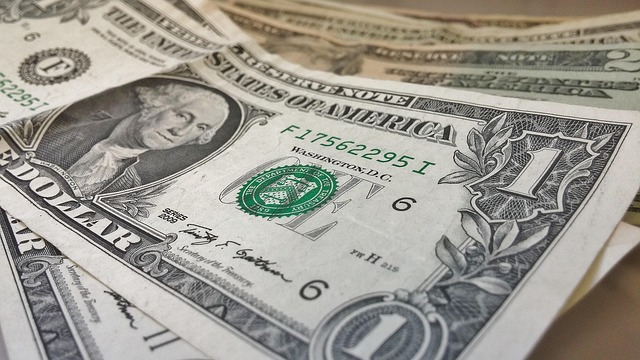Student Loan Debt Relief
Student Debt Relief: Your Comprehensive Guide to Managing and Repaying Student Loans

Student debt has become a significant financial burden for millions of Americans. With the rising cost of higher education, many graduates are overwhelmed by decades of student loan repayments.
If you’re feeling trapped under the weight of your student debt, you’re not alone—but there is hope. In this comprehensive guide, we explain student debt relief options, how to qualify, and strategies you can use to effectively manage and repay your student loans.
What is student debt relief?
Student debt relief encompasses a variety of programs and strategies designed to reduce, forgive, or manage outstanding student debt.
The goal is to make repayment easier or eliminate debt altogether, relieve financial stress, and enable borrowers to regain financial stability.
Why is student debt relief important?
Financial Freedom: Eliminating or reducing student debt can free up money for savings, investments, or buying a home. Mental health benefits: Debt relief can reduce stress, anxiety, and depression associated with financial stress.
Economic growth: Less student debt means more disposable income, which increases overall economic activity.
Different options for paying off student loans
There are several ways to get rid of student loans, each tailored to the borrower’s specific situation. Here are the most common options:
- Income-Driven Repayment Plans (IDRs)
What they are:
IDRs adjust your monthly student loan payments based on your income and family size, often resulting in lower payments.
Types of IDRs include:
Income-Driven Repayment (IBR)
Pay As You Earn (PAYE)
Revised Pay As You Earn (REPAYE)
Income-Driven Repayment (ICR)
Benefits:
Lower Monthly Payments
Loan forgiveness after 20-25 years of eligible payments
- Public Service Student Loan Forgiveness (PSLF)
What it is:
PSLF forgives your remaining federal student loan debt after 120 eligible monthly payments while you work full-time for an eligible employer (public or nonprofit).
Eligibility:
Work for an eligible employer
Borrow 120 eligible payments under an eligible repayment plan
Benefits:
Potential debt relief of thousands of dollars
- Student Loan Forgiveness
What it is:
Specifically for teachers in low-income schools, with up to $17,500 in forgiveness.
Eligibility:
At least five consecutive years of teaching at an eligible college.
- Student Loan Consolidation
What it is?
Combines multiple federal student loans into one fixed-rate loan, simplifying repayment.
Pros and Cons:
Simplifies payments.
Can extend the repayment period and increase the overall interest rate.
- Student Loan Forgiveness and Cancellation
What is it?
Partial or full forgiveness of student debt is available under certain circumstances, such as: For example:
How do I qualify for a student loan forgiveness program?
Each program has specific eligibility criteria. Here’s what you should know:
Federal vs. Private Loans: Most aid programs only apply to federal student loans. Private loans have limited eligibility.
Employment Status: PSLF and student loan forgiveness require employment with eligible organizations and positions.
Repayment History: IDR and forgiveness programs often require regular and prompt payments.
Loan Type: Some forgiveness programs are only available for certain types of federal loans (such as Direct Loans).
Step-by-Step Guide to Student Loan Forgiveness
- Assess Your Debt and Loan Types
Gather all of your loan documents.
Know your loan balances, interest rates, and providers. - Research available emergency assistance options
Visit studentaid.gov to learn more about federal programs.
Contact your lender for personalized advice. - Participate in Income-Driven Repayment Plans
Apply through your lender or the Federal Student Financial Aid website. Submit proof of income annually to keep your plan active.
- Consider public service student loan forgiveness
Verify your employment with an eligible organization.
Make 120 eligible payments under an eligible plan.
Submit your PSLF form annually or after 120 payments.
Tips for speeding up student loan repayment
Make additional payments: Additional payments reduce your principal and interest.
Use additional income: Tax refunds, bonuses, or grants can be used for student loans.
Consolidate debt carefully: Private debt consolidation can lower your interest rate, but you lose government protection.
Get professional advice: Financial advisors or student loan counselors can help you develop personalized strategies.
Common challenges with student loan repayment
Lack of knowledge: Many borrowers are unaware of the programs available.
Complicated eligibility rules: Navigating the eligibility rules can be confusing.
Lender Confusion: Changes in lender information or misunderstandings can delay repayment. Private Loan Limitations: Private lenders rarely offer forgiveness or income-based programs.
Future Trends in Student Loan Restructuring
The situation is changing. Upcoming bills aim to:
Expand debt relief programs
Simplify repayment options
Lower interest rates
Stay informed by regularly checking federal student aid sources and news sources.
Finally: Take Control of Your Student Loans
Managing your student loan debt can be overwhelming, but with the right knowledge and proactive steps, you can achieve debt relief and regain financial freedom.
Whether it’s income-based programs, debt relief programs, consolidation, or strategic repayment, there’s a path tailored to your situation.
Remember:
Educate yourself about your options.
Enroll in programs quickly.
Keep your documents up to date.
Seek professional advice if needed.
Your path to student loan debt relief starts today. Take action and look forward to a debt-free future!
Frequently Asked Questions (FAQ)
Q1: Can I get debt relief if I have private loans? A1: Most government aid programs do not apply to private student loans.
Some private lenders may offer options for those in financial need, but these are limited. Consider debt consolidation or contact a financial advisor.
Q2: How long does it take to receive student loan forgiveness?
A2: This varies by program. For example, PSLF requires 10 years of qualifying payments, while IDR can provide forgiveness after 20-25 years.
Q3: Is student loan forgiveness taxable? A3: Generally, federal student loan forgiveness through PSLF or income-based programs is not taxable. However, consult a tax advisor for personalized advice.
Q4: Can I apply for multiple emergency student loan programs at the same time?
A4: Yes, but make sure you meet the eligibility criteria for each program and avoid conflicts.
Q5: What should I do if I can’t repay my student loan debt?
A5: Contact your lender immediately to discuss income-based repayment plans or forbearance options.
Conclusion

Student loan forgiveness is possible, but it requires a good understanding of the options, organization, and quick action.
By taking advantage of the programs available and developing strategic repayment habits, you can reduce your debt burden and lay the foundation for a better financial future.
If you would like a customized version or additional components, don’t hesitate to ask!